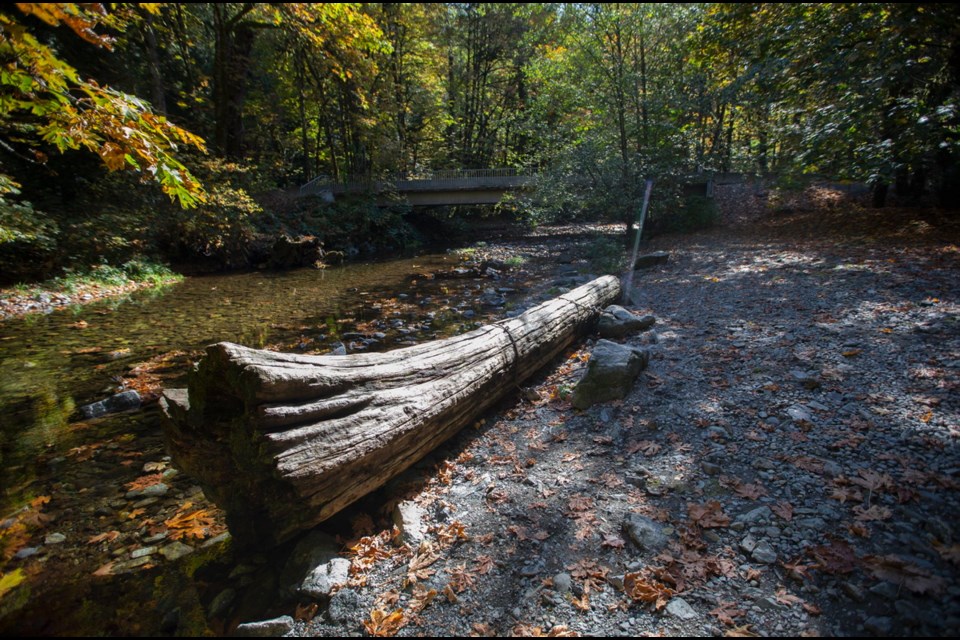Up to 45 million litres of water a day is being released into the Goldstream River in an effort to encourage salmon to begin their journey up the river to spawn.
The “pulse” release, which began on Thursday, will last for seven days, when the situation will be assessed again.
The water comes from four dams and reservoirs controlled by the Capital Regional District.
“We are happy to provide support to aid in salmon spawning,” said Ted Robbins, general manager of CRD Integrated Water Services.
“We will continue to assess their needs on a daily basis — but hopefully the fall rains will arrive soon.”
A dry summer with drought-like conditions has left the Goldstream River, a major spawning stream, with lower than average water flow. It is flowing at 12 million litres a day.
The hope is that the almost fourfold increase in water volume will be enough of an incentive for the fish to start their journey up the river, which runs through Goldstream Park.
The returning fish, mostly chum salmon but with some chinook and coho, are milling about in waters at the mouth of the river, in Saanich Inlet.
“Our hope is that they will be inclined to come up the river,” said Peter McCully, technical adviser to the Goldstream Volunteer Salmonid Enhancement Association. “Requesting a pulse release doesn’t happen every year. It’s a judgment call that we have to make year to year.”
McCully said the association felt compelled to request the measure this year due to heavy predation by harbour seals, which have arrived to take advantage of the enhanced feeding opportunity.
Others argue the seals aren’t the problem.
“The local seal population has been stable — and may have even declined slightly — for the last 20 years,” said Andrew Trites, director of the marine mammal research unit at the University of British Columbia. “The presence of seals, in turn, attracts other predators, such as transient killer whales to the area. Just today, there was a report of up to five whales spotted in the Saanich Inlet, culling the seal population right before their eyes.”
But Trites agrees with the increase in water flow, as the salmon become more vulnerable the longer they linger in Saanich Inlet.
The increase in volume could also dislodge a log jam that has formed at the mouth of the river.
Gaps in the naturally formed log jam are allowing some of the smaller fish to get by, but the obstruction is blocking some of the larger ones.
“We hesitate to intervene and dismantle the log jam,” said McCully. “Natural formations such as this on the flood plain will eventually become an excellent habitat for juvenile salmon. For now, the increased flow may either wash it away or submerge it enough that the fish can get over the impediment.”
The Goldstream River sees up to 30,000 returning salmon every year. The salmon run typically lasts up to nine weeks, beginning in early to mid-October.
The salmon run sparks a surge in visitors to Goldstream Park, who are asked to stay out of the water.
To see the fish better, wear sunglasses with polarized lenses to cut down on glare from the water. Don’t wear brightly coloured clothing. Leave dogs at home or keep them on a leash.
The Freeman King Visitor Centre at Goldstream Provincial Park, 2930 Trans-Canada Hwy., is open 9 a.m. to 4 p.m. daily, including Thanksgiving Monday.



